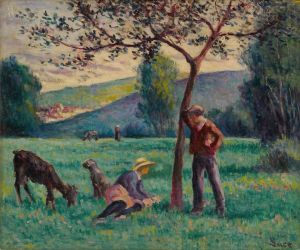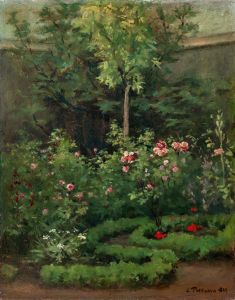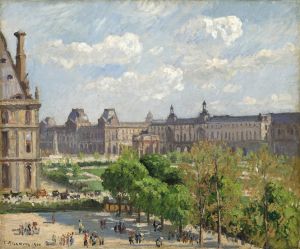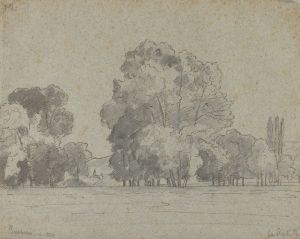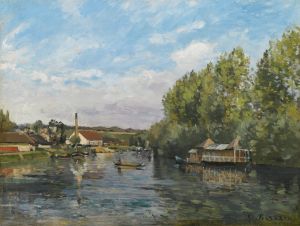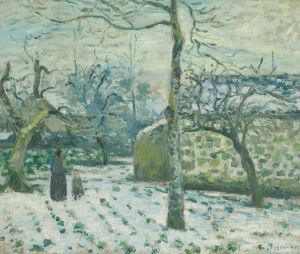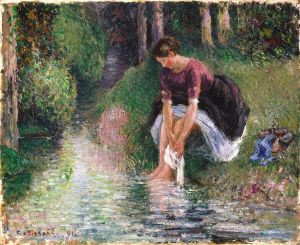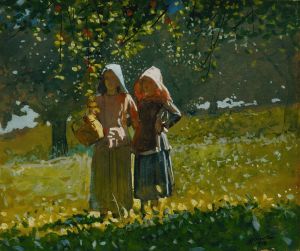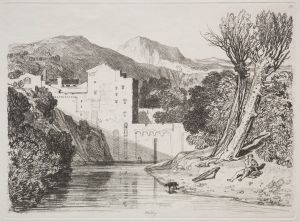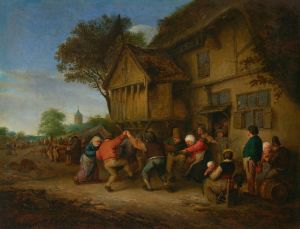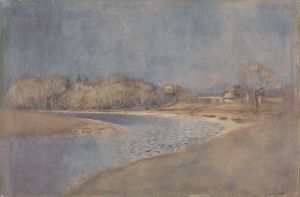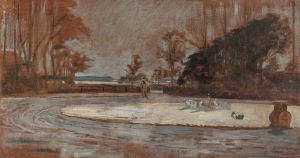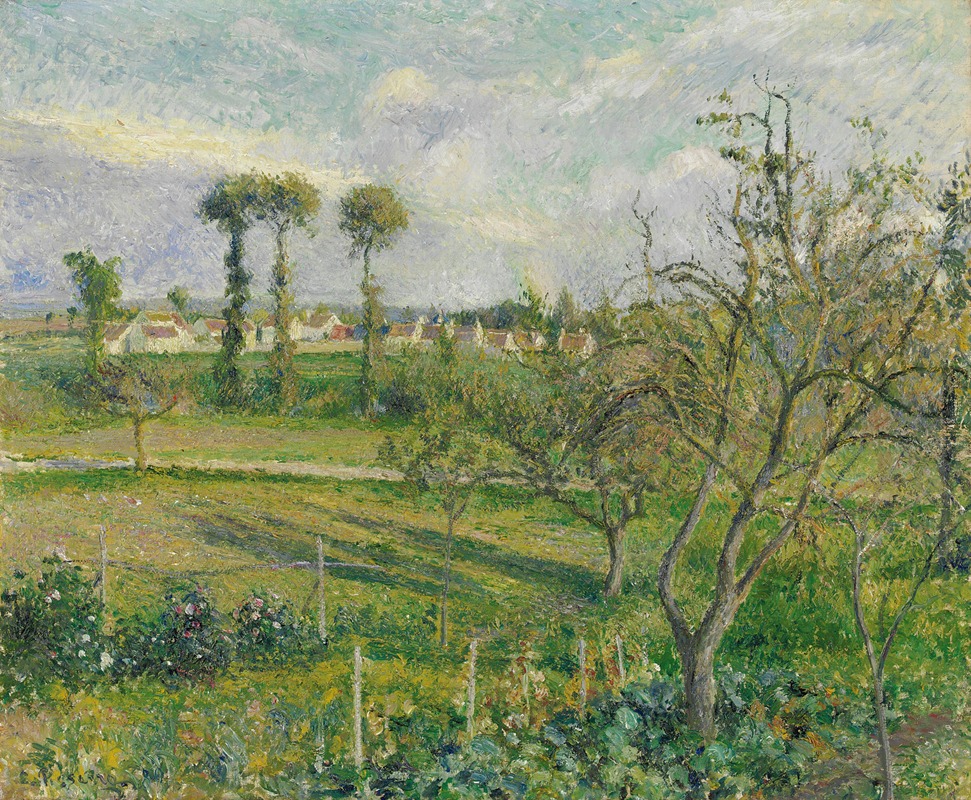
Soleil Couchant Au Valhermeil, Auvers-Sur-Oise
A hand-painted replica of Camille Pissarro’s masterpiece Soleil Couchant Au Valhermeil, Auvers-Sur-Oise, meticulously crafted by professional artists to capture the true essence of the original. Each piece is created with museum-quality canvas and rare mineral pigments, carefully painted by experienced artists with delicate brushstrokes and rich, layered colors to perfectly recreate the texture of the original artwork. Unlike machine-printed reproductions, this hand-painted version brings the painting to life, infused with the artist’s emotions and skill in every stroke. Whether for personal collection or home decoration, it instantly elevates the artistic atmosphere of any space.
"Soleil Couchant Au Valhermeil, Auvers-Sur-Oise" is a painting by the renowned French artist Camille Pissarro, who is often regarded as one of the pivotal figures in the Impressionist movement. Born on July 10, 1830, in the Danish West Indies, Pissarro moved to Paris in 1855, where he became an integral part of the Impressionist circle, contributing significantly to the development of the style.
This particular painting, whose title translates to "Sunset at Valhermeil, Auvers-Sur-Oise," captures the serene and picturesque landscape of Auvers-sur-Oise, a commune in the northwestern suburbs of Paris. Auvers-sur-Oise is famously known for its association with several prominent artists, including Vincent van Gogh, who spent his final months there. Pissarro, like many of his contemporaries, was drawn to the rural charm and natural beauty of the area, which provided a rich source of inspiration for his work.
Created during a period when Pissarro was deeply engaged with the Impressionist movement, "Soleil Couchant Au Valhermeil, Auvers-Sur-Oise" exemplifies the artist's commitment to capturing the transient effects of light and atmosphere. The painting is characterized by its loose brushwork and vibrant color palette, hallmarks of the Impressionist style. Pissarro's technique involved applying small, distinct strokes of color that blend optically rather than physically, allowing the viewer's eye to mix the colors and perceive the scene as a cohesive whole.
The subject matter of the painting—a sunset—allowed Pissarro to explore the dynamic interplay of light and shadow, a central concern of the Impressionists. The warm hues of the setting sun are juxtaposed with the cooler tones of the landscape, creating a harmonious balance that evokes the tranquility of the evening. Pissarro's keen observation of nature and his ability to convey its ephemeral qualities are evident in this work, which captures a fleeting moment with both precision and emotion.
Pissarro's choice of Auvers-sur-Oise as a setting reflects his interest in rural life and landscapes, themes that recur throughout his oeuvre. Unlike some of his contemporaries who focused on urban scenes, Pissarro often depicted the countryside, emphasizing the simplicity and beauty of rural existence. His paintings from this period frequently feature agricultural workers, village scenes, and natural vistas, underscoring his affinity for the pastoral.
Throughout his career, Pissarro remained committed to the principles of Impressionism, even as he experimented with other styles, such as Neo-Impressionism. His work had a profound influence on subsequent generations of artists, and he is often credited with mentoring and supporting younger painters, including Paul Cézanne and Paul Gauguin.
"Soleil Couchant Au Valhermeil, Auvers-Sur-Oise" is a testament to Pissarro's mastery of the Impressionist technique and his enduring fascination with the natural world. The painting not only captures the beauty of a specific locale but also embodies the broader artistic goals of the Impressionist movement: to depict the world as it is perceived in fleeting moments, full of light, color, and life.






